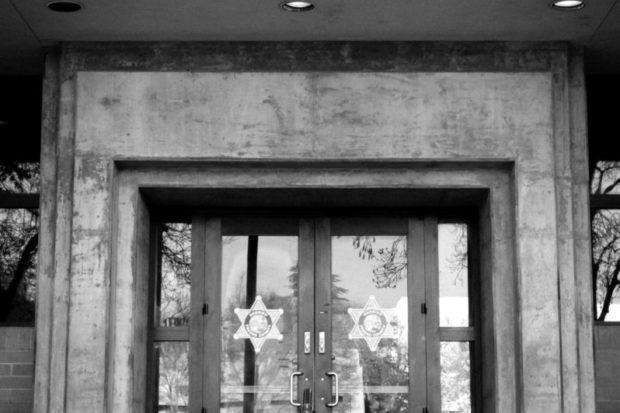
By Ernesto Saavedra
(Author’s note: This is one of a series of articles on this subject. Stay tuned for more to come.)
There are more people incarcerated in the United States than in any other country in the world. As of 2013, there are about 2.24 million according to the World Prison Population List. When you add probation, parole and local jails, in Correctional Populations in the United States, 2013, the Bureau of Justice Statistics reports that “an estimated 6,899,000 persons were under the supervision of adult correctional systems at yearend.” The report goes on to note that “1 in 35 adults (2.8%) in the United States are under some form of correctional supervision, and 1 in 51 adults on probation or parole, compared to 1 in 110 adults incarcerated in prison or local jail.”
Michelle Alexander’s book, The New Jim Crow, notes that about 90% of these people are male; this means that one out of every 16 males between the ages of 15 and 60 in the United States is currently under the control of the criminal justice system. For females, the ratio is about 1 to 140. African Americans are imprisoned at about five times the rate of Whites, whereas Hispanics are imprisoned at about three times the rate of Whites. Another alarming, often overlooked figure is that half of the close to 7 million persons in the criminal justice system have mental health issues.
The Bureau of Justice Statistics reports that “in state prisons, female prisoners had higher rates of mental health problems at 73% compared to males at 55%. In county jails, the percentage was even higher; for females, it is 75% and for males, 63%. With such alarming statistics, one would think mental health care for these inmates would be a priority. However, this is not the case.
In February 2013, Alan Horowitz wrote an article for the Huffington Post titled “Mental Illness Soars in Prisons, Jails While Inmates Suffer.” It points out that “in the past three years, $4.35 billion in funding for mental health services has been cut from state budgets across the nation…Because of the cuts, treatment centers have had to trim services and turn away patients…A report by the Treatment Advocacy Center even found that there are more people with severe mental illness in prisons and jails than in hospitals.” Prisons and jails lack the resources and training to support inmates with mental health problems. In California, the Mentally Disordered Offender Law was passed to address this issue.
In 1986, California passed the Mentally Disordered Offender (MDO) Law (Sections 2960-2981 of the California Penal Code). Under this law, prisoners convicted of violent felonies can be incarcerated in state mental hospitals run by the Department of Mental Health after they have served their prison terms. They can be held during parole and after. Each year, they are entitled to a court hearing to determine whether the state hospital can continue to hold them. According to the MDO law, those that qualify as MDO patients need to meet the following criteria:
The prisoner has a severe mental disorder;
The prisoner used force or violence or caused serious bodily injury in one of the prisoner’s commitment crimes;
The severe mental disorder was one of the causes of or was an aggravating factor in the commission of the crime for which the prisoner was sentenced to prison;
The prisoner’s “severe mental disorder is not in remission” or “cannot be kept in remission without treatment”;
The prisoner had been in treatment for the severe mental disorder for 90 days or more within the year prior to the prisoner’s parole or release; and
As a result of the severe mental disorder, the prisoner represents a “substantial danger of physical harm to others.
Although it seems that the MDO law is well intentioned, Daniel Trebas, an MDO patient at the Fresno County Jail awaiting a re-commitment hearing for more than a year, has a different take.
Most of these patients are on powerful drugs prescribed by state hospital psychiatrists, and when transferred to the county jails during court hearings, the jails do not have to continue the drug treatment, causing the patients to experience psychosis from the sudden drug withdrawal. Then, unable to attend their court hearings, they bounce back and forth from the state hospitals to the county jails, causing them great harm while adding to both the state and the counties’ expense. [Fearing jail conditions,] many patients who could be released from treatment are effectively coerced into staying in the state mental hospitals, where the cost of their care exceeds $200,000 per year per patient.
In 2001, the state finally admitted that all costs associated with the court proceedings should be covered by the state. However, some counties such as Fresno are footing the bill without billing the state, racking up to untold millions of dollars since then. It is imperative that this gets looked into closely. If this is how our money is spent, imagine how it is not, that is, quality mental health care. Any county resident can assist in addressing this problem by sending questions and complaints to the County Sheriff’s Office, the county Department of Public Health and the county Board of Supervisors.
*****
Ernesto Saavedra is the editor of the Community Alliance. Contact him at ernesto.fresnoca@gmail.com.
